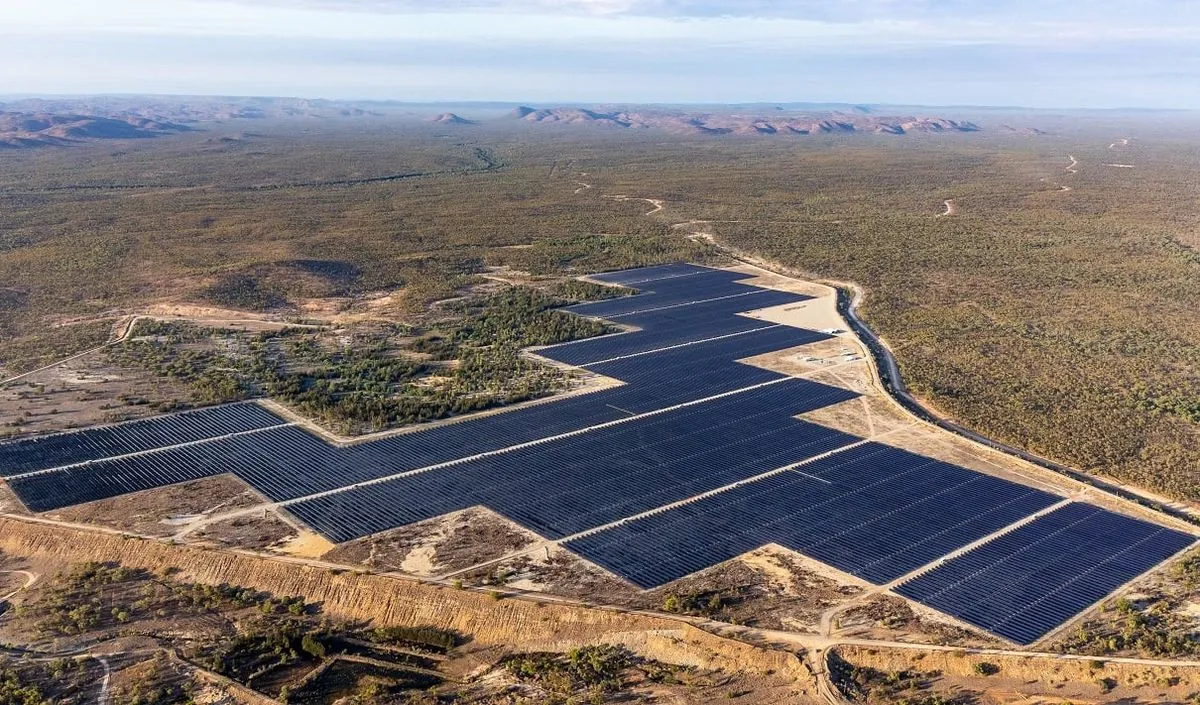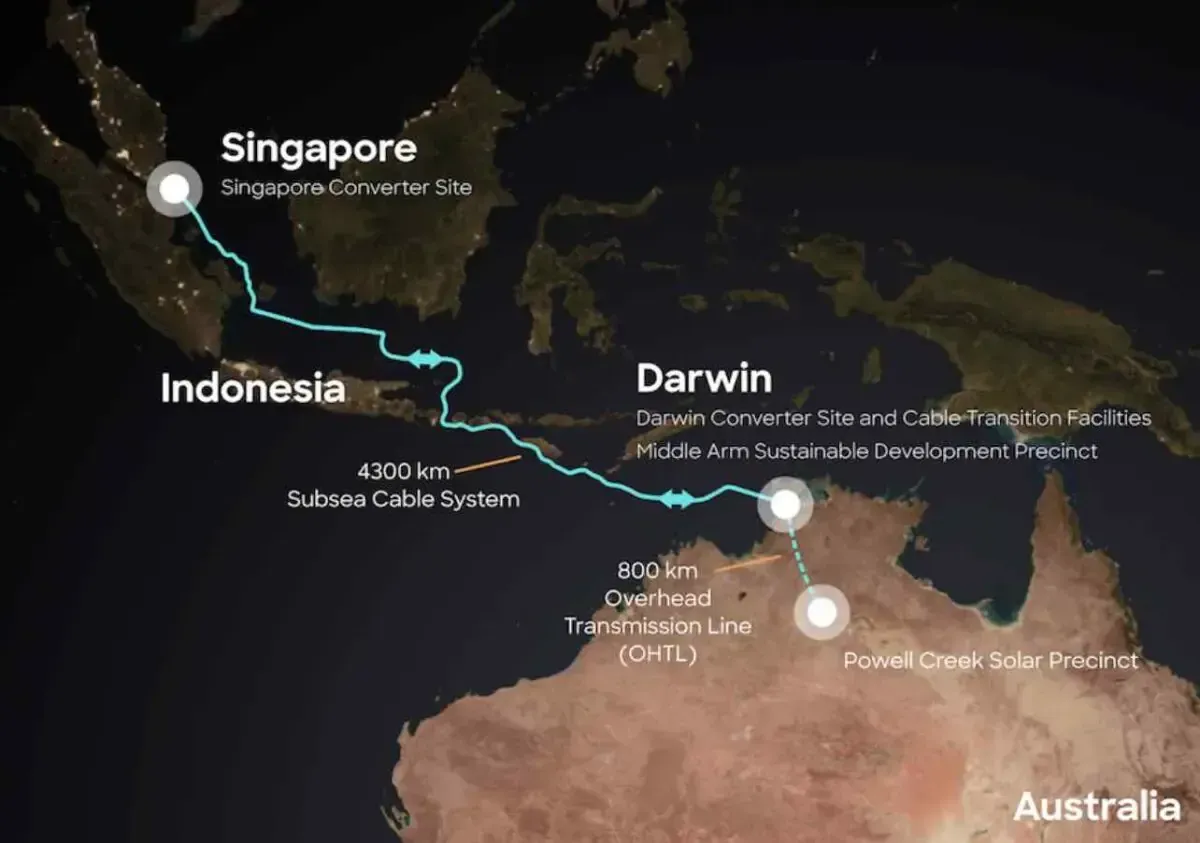Australia Approves $19 Billion Solar Farm to Power Singapore
Australia grants environmental approval for Sun Cable's massive solar project, aiming to supply green energy to Singapore. The ambitious plan involves building the world's largest solar precinct in northern Australia.

In a significant move towards renewable energy, the Australian government has granted environmental approvals for a AUD 30 billion ($19 billion) solar farm project. This ambitious initiative, known as the Australia-Asia PowerLink, aims to supply green electricity to Singapore through a submarine cable.
Sun Cable, the company behind the project, plans to construct a 12,400-hectare solar farm in remote northern Australia. This vast area, equivalent to 17,000 soccer fields, would become the world's largest solar precinct. The project involves transmitting electricity to Darwin via an 800-kilometer overhead transmission line, and then to Singapore through a 4,300-kilometer submarine cable.
The Australia-Asia PowerLink is designed to deliver up to six gigawatts of green electricity annually. This output could potentially offset 8.6 million tonnes of CO2 emissions each year, contributing significantly to Australia's climate goals. Tanya Plibersek, the Australian Environment Minister, emphasized the project's importance, stating:
"This massive project is a generation-defining piece of infrastructure. It will be the largest solar precinct in the world – and heralds Australia as the world leader in green energy."
The project's journey has been tumultuous. Initially backed by mining magnate Andrew Forrest and Atlassian co-founder Mike Cannon-Brookes, it faced a setback in January 2023 when Sun Cable entered voluntary administration due to a funding dispute. However, by May 2023, a consortium led by Cannon-Brookes' Grok Ventures acquired the company, finalizing the takeover in September 2023.

Cameron Garnsworthy, SunCable Australia's managing director, expressed satisfaction with clearing this major regulatory hurdle. The company now aims for a Final Investment Decision by 2027, with electricity supply projected to commence in the early 2030s.
This project aligns with Australia's growing renewable energy sector, which has expanded by 60% since 2014. Australia boasts the highest per capita solar capacity of any continent, with its solar energy potential estimated at 25,000 times its current electricity usage. Northern Australia, where the solar farm will be located, receives some of the highest levels of solar radiation globally, making it an ideal location for such an ambitious project.
The Australia-Asia PowerLink could potentially supply up to 15% of Singapore's electricity needs, significantly impacting the city-state that currently imports nearly 100% of its energy. The submarine cable, which would be one of the longest in the world, will be laid at depths of up to 3,000 meters.
While this project represents a major step towards renewable energy, Australia's energy policy remains a contentious political issue. The country has historically been reliant on coal and gas, making it one of the world's worst greenhouse gas emitters per capita. However, Australia aims to reach net-zero emissions by 2050, and projects like the Australia-Asia PowerLink are crucial in achieving this goal.
The debate over Australia's energy future continues, with the main opposition party recently announcing plans to build the country's first nuclear power plants as early as 2035. This ensures that energy policy will remain a key issue in upcoming elections.
As Australia moves forward with this groundbreaking solar project, it takes a significant step towards becoming a renewable energy superpower, potentially transforming its role in the global energy landscape.


































